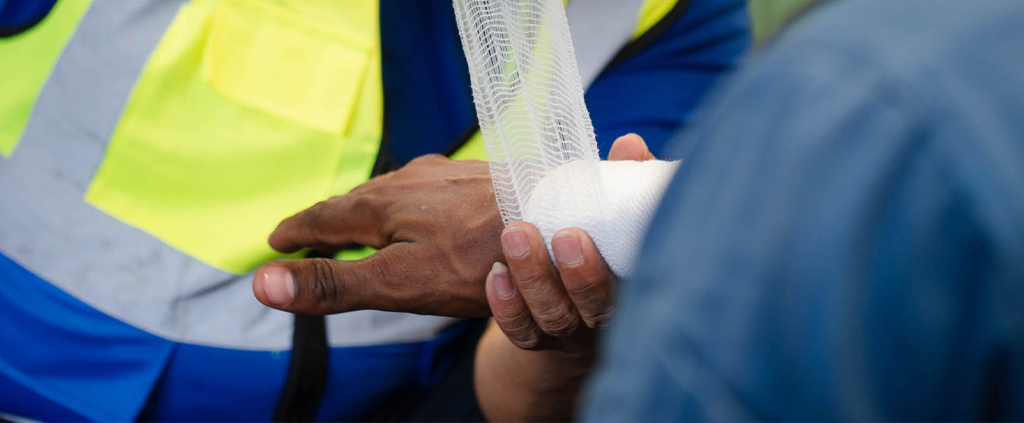"CARE,PROTECT,GROW": THE U.S.COMPLIANCE BLOG
Filter by Topic

How to Select the Right Respiratory Protection
Across all facilities, ensuring the safety and health of workers in environments with potential airborne contaminants is paramount. Respiratory protection is a critical component of workplace safety, designed to protect employees from inhaling harmful substances that can cause severe health issues. This comprehensive guide covers the basics of selecting the right respiratory protection, from identifying air contaminants to choosing the appropriate respirator.

Toxic Release Inventory Reporting Process and Considerations
If you manufacture, process or otherwise use EPCRA Section 313 chemicals, then the Toxics Release Inventory (TRI) report may apply to your facility. In this article, we will cover the reporting criteria and process, exemptions, how to gather information, common pitfalls, EPA and state reporting, and penalties.

Understanding the Unpreventable Employee Misconduct Defense in OSHA Inspections
As a business owner or employer, prioritizing workplace safety is crucial. However, despite best efforts, accidents or violations can still happen. In such instances, understanding your rights and defenses under the Occupational Safety and Health Administration (OSHA) regulations becomes critical. One such defense is the Unpreventable Employee Misconduct Defense. In this article, we’ll explore what the defense entails, the criteria for application, and how you can use the defense to avoid certain citations issued by OSHA.

Strategies and Considerations for Noise Reduction in Manufacturing
In the dynamic world of manufacturing, where productivity is paramount, noise often becomes an overlooked concern. However, in the realm of occupational safety and health, noise reduction plays a pivotal role in safeguarding the well-being of workers. In this article, we will explore various facets of noise reduction in manufacturing, ranging from understanding work-related noise exposure to implementing effective control measures.
Managing OSHA’s Electronic Submission of Workplace Injury Data
In the ever-evolving landscape of workplace safety, OSHA’s Electronic Submission of Injury and Illness Data, also known as the ITA (Injury Tracking Application), plays a crucial role. This article aims to guide businesses through the intricacies of electronically submitting OSHA logs, focusing on who must submit, what to submit, and how to navigate the OSHA ITA website.

Navigating Tier II Reporting: A Comprehensive Guide to Compliance
Navigating Tier II reporting under the Emergency Planning and Community Right-to-Know Act (EPCRA) is crucial for industries dealing with hazardous chemicals. This comprehensive guide will walk you through the essentials of Tier II reporting, offering practical insights and guidance for compliance.

Elevating Safety Standards: Effective Personal Protective Equipment (PPE) Management
A safety professional’s primary purpose is to identify, analyze, and eliminate hazards before the risk of potential employee exposure. While many of these hazards can be controlled through means of workplace design and modification, some hazards are not as easily controlled and can remain even after thorough process improvements. For the hazards that continue to exist, the last line of defense in the safety arsenal is Personal Protective Equipment (PPE).

The Importance of the New EPA Storm Water Permit in Illinois
When it comes to protecting the environment and ensuring regulatory compliance, the Illinois Environmental Protection Agency (IL EPA) plays a crucial role. As part of their efforts, the IL EPA issues storm water permits to industrial sites. These permits, authorized under the Clean Water Act, are essential for maintaining water quality and preventing pollution. In this comprehensive guide, we will explore the significance of EPA storm water permits in Illinois and take a look at the new permit put into place on July 1, 2023.

Industrial Hygiene: A Guide to Frequently Asked Questions
By implementing policies and procedures that reduce or eliminate common risks, workplace hygiene measures keep employers accountable for potential workplace hazards and maintain the safety of their employees.
The Occupational Safety and Health Administration (OSHA) defines industrial hygiene as the process of recognizing, evaluating, and controlling potentially harmful hazards in or around the workplace that may impact employees by causing injury or making them ill.

Multi-Site Organizations – Tools and Tips to Effective EHS
Managing and maintaining the environment, health and safety (EHS) program at a facility with one location can be difficult, but having multiple locations to manage makes the process even more arduous. In this article, we will cover some of the common challenges faced when managing an EHS program at a multi-site organization, along with some tools and tips to assist in creating an effective and consistent program.

Equipment and Facility Inspections
Completing internal safety inspections is a regular occurrence for companies with good safety programs. Within these programs, there are many different types of internal equipment and facility safety inspections that are completed for several different reasons. One reason is to follow OSHA regulations and other applicable related safety standards. But above all, the purpose of conducting these safety inspections should be to prevent injuries. Understanding that goal means that the inspections themselves need to be conducted at such a frequency that allows for sufficient and timely hazard identification as well as the correction of those hazards. In most cases, OSHA (or other related safety standards) specifies or provides guidance regarding the frequency at which inspections should be completed.

Bloodborne Pathogens: Risk Mitigation in Manufacturing
Regardless of your title, department, job description, or tenure with a company, work-related injuries and exposure to bloodborne pathogens are hazards that employers and employees alike must be ready for. There are certain steps you, as the employer, can take to mitigate the risk of exposure for your employees. Bloodborne pathogens are pathogenic microorganisms found in human blood and other potentially infectious materials (OPIM).
